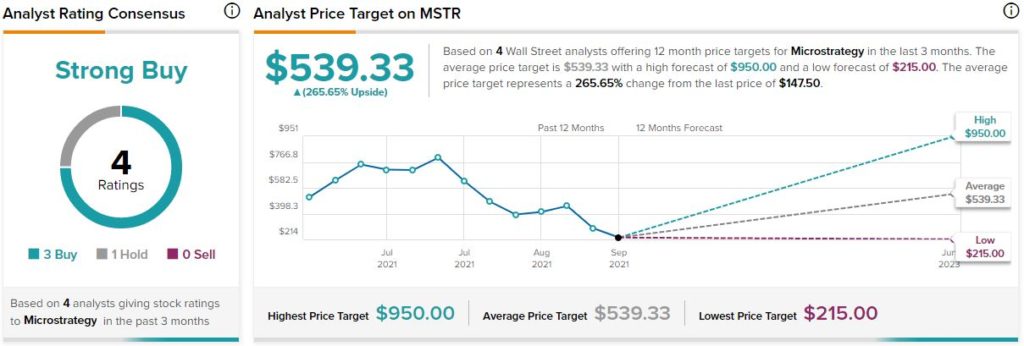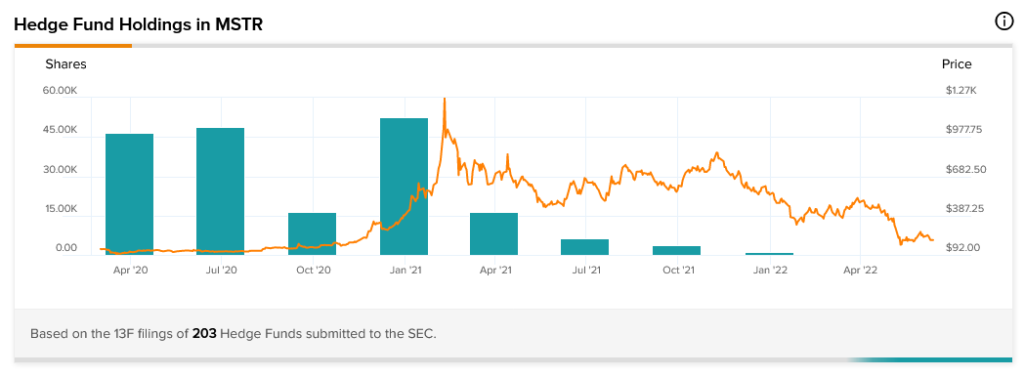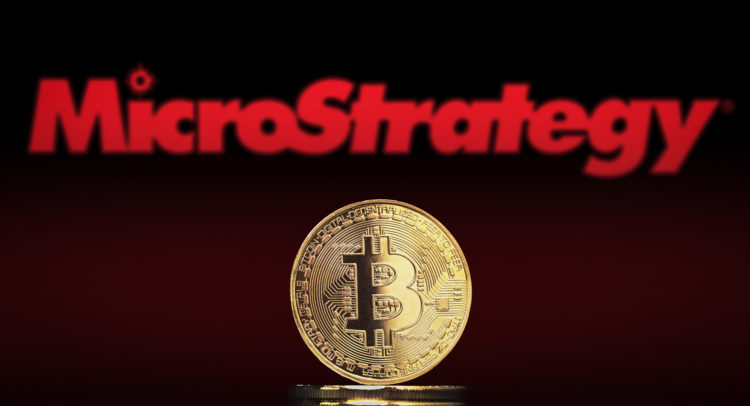MicroStrategy (MSTR) made a name for itself in business intelligence. Perhaps more than that, however, it’s also widely known for the massive bet it placed on the mother of all cryptocurrencies: bitcoin (BTC-USD).
Don't Miss Our Christmas Offers:
- Discover the latest stocks recommended by top Wall Street analysts, all in one place with Analyst Top Stocks
- Make smarter investments with weekly expert stock picks from the Smart Investor Newsletter
A recent plunge in bitcoin’s value took MicroStrategy down with it, as the company lost over 29% in premarket trading on Monday. Those losses continued into Monday’s trading session.
However, is MicroStrategy still worth investing in? At this point, honestly, I’m not so sure. I’m neutral on MicroStrategy right now; a couple of moves in either direction will either send the company down in flames or give it a whole new life.
The last 12 months for MicroStrategy all took place in a surprisingly tight range, at least until this morning. Except for a handful of exceptions, MicroStrategy spent the last 12 months trading between $200 and $210 per share. Now it’s down to around $155.
What caused such a plunge for MicroStrategy? A concomitant plunge in one of MicroStrategy’s biggest assets: bitcoin. Bitcoin plunged over the weekend, taking it back down under the $24,000 mark for the first time since December 2020.
Since MicroStrategy owns roughly 129,218 bitcoin, a drop in the value of bitcoin is commonly connected to a drop in MicroStrategy’s share price. MicroStrategy purchased its bitcoin at an aggregate price of around $30,700 per coin. The lower the price goes, the bigger risk it poses to the company.
Wall Street’s Take
Turning to Wall Street, MicroStrategy has a Strong Buy consensus rating. That’s based on three Buys and one Hold assigned in the past three months. The average MicroStrategy price target of $539.33 implies 265.7% upside potential.

Analyst price targets range from a low of $215 per share to a high of $950 per share.
Most Investor Sentiment Metrics are Down
As enthusiastic as analysts seem to be about MicroStrategy, they’re proving a bit contrarian against the wider field. MicroStrategy currently holds a Smart Score of 2 out of 10 on TipRanks, which is the second-lowest level of “underperform.” That makes it much more likely to lag the wider market than to do better than it.
Hedge fund involvement in MicroStrategy, for example, is now virtually nonexistent. The TipRanks 13-F Tracker reveals that the total has been on the decline since March 2021. This was after a major spike in late 2020.
Hedge funds sold 937 shares last quarter, and given that December 2021 had hedge funds holding a total of 952 shares, there wasn’t much farther left to fall – but fall it did.

Meanwhile, insider trading at MicroStrategy is heavily Sell-weighted. It’s a different story in the last three months, as two Buy transactions were recorded, and that’s all that’s been recorded for 2022 so far. However, pulling back to the full year shows sellers in a clear lead. Sell transactions outstripped Buy transactions by 18 to six.
Retail investors who hold portfolios on TipRanks, meanwhile, were on board with MicroStrategy but have since reconsidered. While TipRanks portfolios that held MicroStrategy were up 0.2% in the last 30 days, they’re down 0.8% in the last seven days.
As for MicroStrategy’s dividend history, that has yet to emerge. The company seems focused on improving its share price rather than offering a dividend.
More than the Sum of Its Bitcoin
MicroStrategy put a massive investment behind bitcoin, and it initially paid off. Yet, there are signs emerging that this may not be the case much longer. Word from MicroStrategy CFO, Phong Le, notes that the company may be facing some bad news in the near future.
Le noted that if the price of bitcoin goes below $21,000 per coin, MicroStrategy may have to offer up more of its bitcoin stash to cover a loan with Silvergate Bank. MicroStrategy used that loan—which was collateralized with bitcoin as well—to buy more bitcoin.
The good news is that, even if that does happen, MicroStrategy holds sufficient bitcoin that it can offer more to secure a loan and still have some on hand. Better yet, investors don’t seem especially concerned, thanks to that liquidity cushion.
MicroStrategy is also more than just the sum of its bitcoin. Its business intelligence operations help improve businesses. Pfizer (PFE) was among the companies that turned to MicroStrategy to improve operations, and MicroStrategy has a case study report on its own website for those who’d like to see how it all worked.
With a recession increasingly likely, businesses may have an interest in paying out cash to improve operations. That’s something of a coin flip, though. Some businesses certainly want to improve, particularly during bad times. However, other businesses will double down on holding cash as opposed to spending it.
It’s not hard to make a case that improving operations brings in more money. Nonetheless, some will prefer to hold onto cash rather than risk it on potentially making more later.
Concluding Views
Here’s the rundown: MicroStrategy has basically two operating arms going on. The first is its massive bitcoin hoard, which has drawn a lot of attention in the past. It might also have garnered some clients for its other major operation: Business Intelligence.
If the value of bitcoin continues to drop, then MicroStrategy will drop with it. We’ve already seen it happen more than once before. It’s likely to happen again.
The company’s potential in Business Intelligence, meanwhile, could go either way. Certainly, some companies will find it valuable. Others will prefer the more versatile and immediate value of the cash they hold that might have gone to paying for MicroStrategy’s services.
MicroStrategy is currently trading well under its lowest price targets. Its highest targets, meanwhile, look like an impossible dream from here. With most investor sentiment metrics turning south, it’s not looking good for MicroStrategy, going forward.
All it will take to change that, however, is one big jump in bitcoin prices. Those who believe that will happen may want to take advantage of a buy-the-dip strategy in the making. Those who don’t, of course, won’t. When it’s so clearly a coin flip, I tend to pull back, and that’s why I’m neutral on MicroStrategy.



















